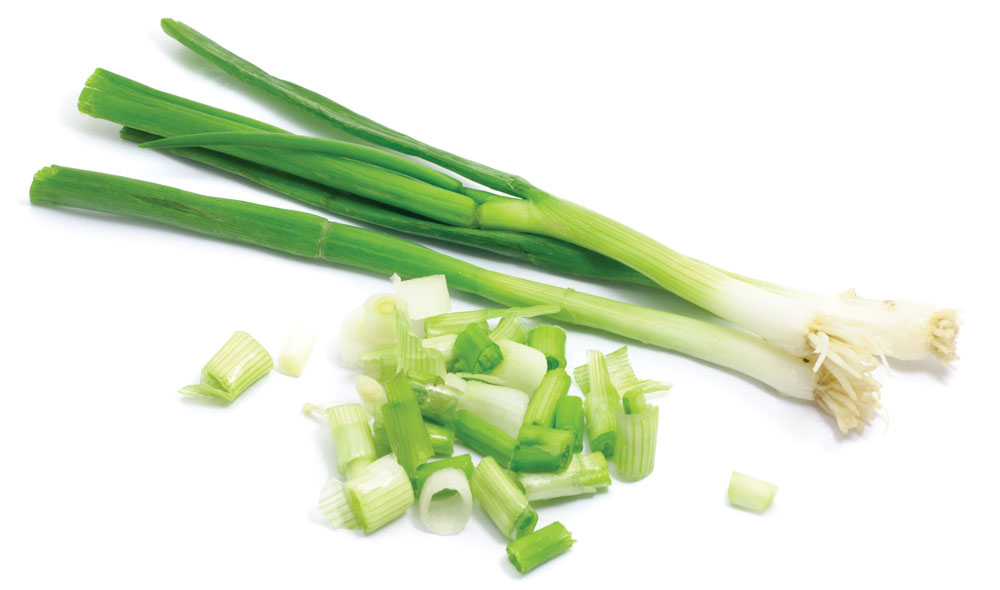OMNIPRESENT ONIONS GIVE YOU OPTIONS
Name: Wild Onions
(Allium spp.)
All onions are members of the Allium genus, which are part of the onion family. There are about 700 species of Allium worldwide. Some botanists still categorize all onions as part of the larger lily family.
Description
If you can recognize a green onion in the supermarket, you can recognize a wild onion. There are hundreds of species of wild onions. They arise from a small bulb underground. They all have hollow leaves that look like grass, and they can be tiny like grass or as big as the green onions in the market.
The flowers are clustered at the top of a stalk, and each flower has three petals and three identical sepals, so it appears that the flowers have six petals. Each flower has six stamens and one pistil. The flower color ranges from white to pink to darker hues.
The unmistakable identifying feature is the aroma! If you have a good sense of smell, you can identify a wild onion. If it looks like an onion but doesn’t have the aroma, just leave it alone!
Areas Found
Wild onions are found throughout North America in nearly every environment, including the desert, open fields and high-elevation meadows.
When to Harvest/Availability
Though you can harvest the bulbs year-round, the plant is most obvious in the spring and summer, when the leaves and then the flowers appear. The flower stalk becomes fibrous with age and inedible.
Uses
Wild onions are used as a flavoring for every food where you’d normally add onions, chives, scallions and such. Add the greens to soups, salads, stews, MREs, stir-fries, egg dishes and many others. The bulbs can be added to any cooked or raw dish.
PROCESSING: If you are using the bulbs, you will remove the outer layers and then wash them to remove any dirt. If the bulbs are small, you can toss them into salads or soups whole. If they are larger, you can slice them so they cook quickly.
The greens can be pinched from the plant without uprooting the plant and can be rinsed and then diced, then added to soups, salads, stews and other recipes.
MEDICINE/NUTRITION: Garlic, onions, and by extension the entire Allium genus have been extensively studied over the past several decades. Incorporating any of these in your diet, including wild onions, has been shown in numerous studies to lower cholesterol levels, reduce high blood pressure and assist in preventing influenza.
OTHER USES: The fresh greens of any of the wild onions can be mashed up and applied directly to wounds, as a field treatment to help prevent infections.
Advice for Growing
Any onions are incredibly simple for the beginning gardener to grow. They can be grown from seed or from clusters. Wild onion roots multiply every year, and these can be divided, and replanted so that each one continues to multiply. If you use only the greens, you can have a perennial onion patch that will produce year after year.
Cautions
Eating excessive amounts of any Alliums – perhaps done when there were no other foods available – could cause stomach and intestinal pain. However, this is rarely an issue when you consume the greens and bulbs in normal amounts.
The biggest concern when collecting from the wild is to be sure you have an onion and not another member of the lily family that looks like a wild onion but isn’t. Remember, if it doesn’t have the obvious onion odor, don’t eat it, unless you know it to be an edible plant.
Recipes
THE SUN REFLECTS UPON THE LAKE
• 2 cups wild onion bulbs and leaves, fibrous parts removed
• 2 large potatoes, diced
• 2 hard-boiled eggs
• Butter
• Paprika
Simmer the potatoes and onions in a covered pot with minimal water until the potatoes are cooked. Serve and then top with paprika and butter. Slice the eggs and add them to the side. This makes an excellent dish served with trout.
ROCKY MOUNTAIN WINTER (CREAM OF ONION SOUP)
• 2 cups wild onion bulbs and leaves, chopped fine
• 4 cups water
• 3 tablespoons flour (you can use whole wheat, soy or potato flour)
• 2 cups milk
Clean and chop the onions, and cook in water. Blend the flour with the milk until there is a fine consistency, then pour it in with the onions, stirring while you pour. Add the rest of the milk and cook the soup at a low temperature for about 15 minutes. Serve with toast.
About ASG’s Plant Advisor
Christopher Nyerges has been teaching ethnobotany since 1974. He is the author of “Guide to Wild Foods and Useful Plants” and other books on the uses of wild plants. Nyerges has contributed many articles to American Survival Guide on a wide range of topics. He can be reached at SCHOOLOFSELF-RELIANCE.COM.




Editor’s note: A version of this article first appeared in the January, 2020 print issue of American Survival Guide.


